Do you love your older car but worry it lacks modern safety features? You see new cars with amazing tech and feel you're missing out on crucial protection. You can add these systems to the car you already love.
Yes, you can absolutely retrofit Advanced Driver Assistance Systems (ADAS) to an older car. Key upgrades like blind-spot monitoring, forward collision warnings, and backup cameras are available as aftermarket kits. This significantly boosts your vehicle's safety without you needing to buy a new car.
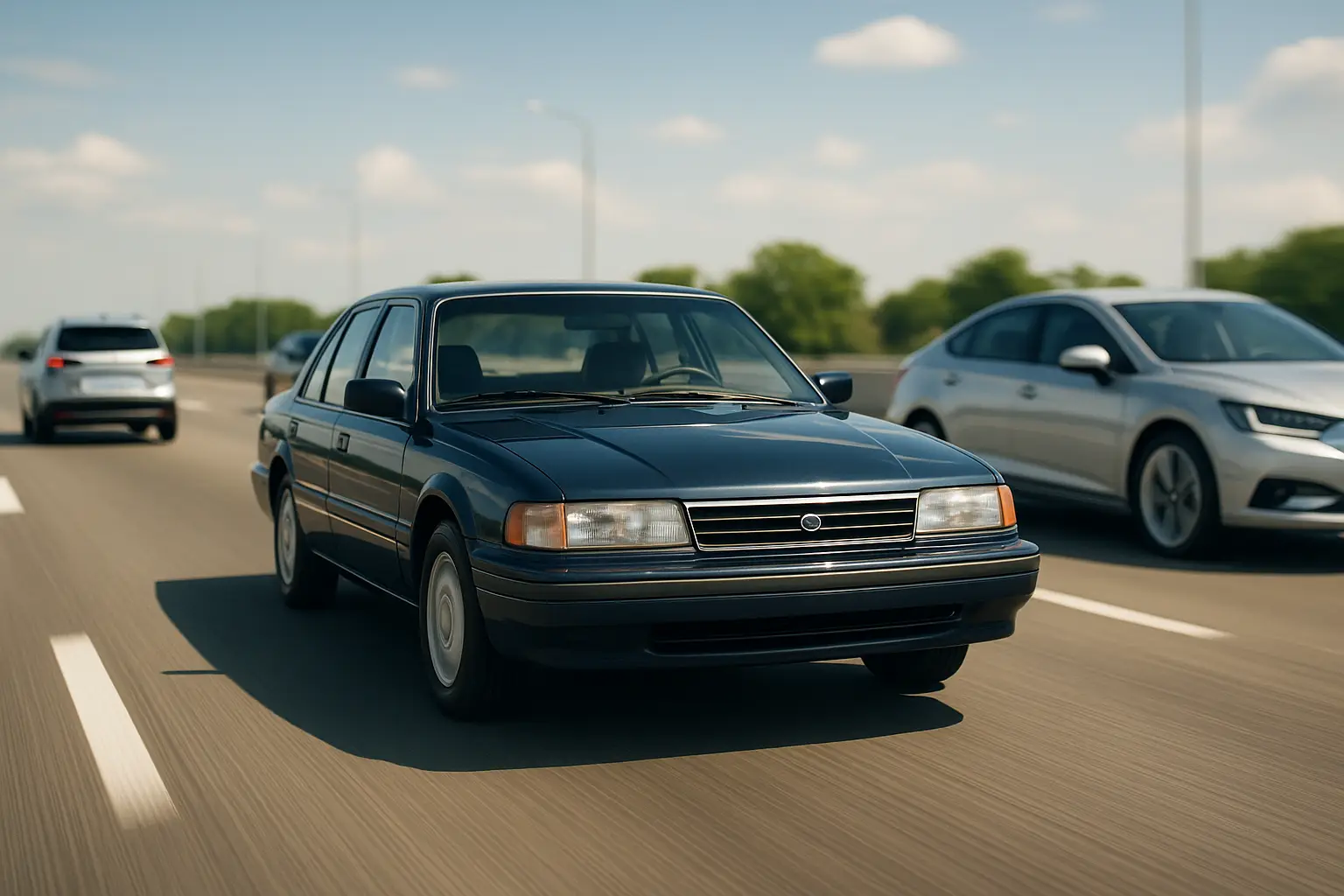
I love the character and simplicity of older cars. Maybe you do too. There's a certain joy in driving a car that's fully paid off, one that holds memories. But I also know the nagging feeling in the back of your mind. You wonder if you're as safe as you could be. As the founder of VST Tech, I've dedicated my life to automotive safety. I'm here to tell you that you don't have to choose between the car you love and the safety you deserve. Technology has advanced so much that we can now bring modern protection1 to older vehicles. Let’s look at the top five systems you should consider.
Can a simple sensor really prevent a rear-end collision?
Distracted for a second? The car ahead slams its brakes. It is a heart-stopping moment. You can avoid this panic with a system that is always watching the road for you.
Yes, a forward collision warning (FCW) system uses a camera or radar to monitor the distance to the vehicle in front. It alerts you if you are too close, giving you critical time to react and prevent a crash. Some advanced systems even apply the brakes.
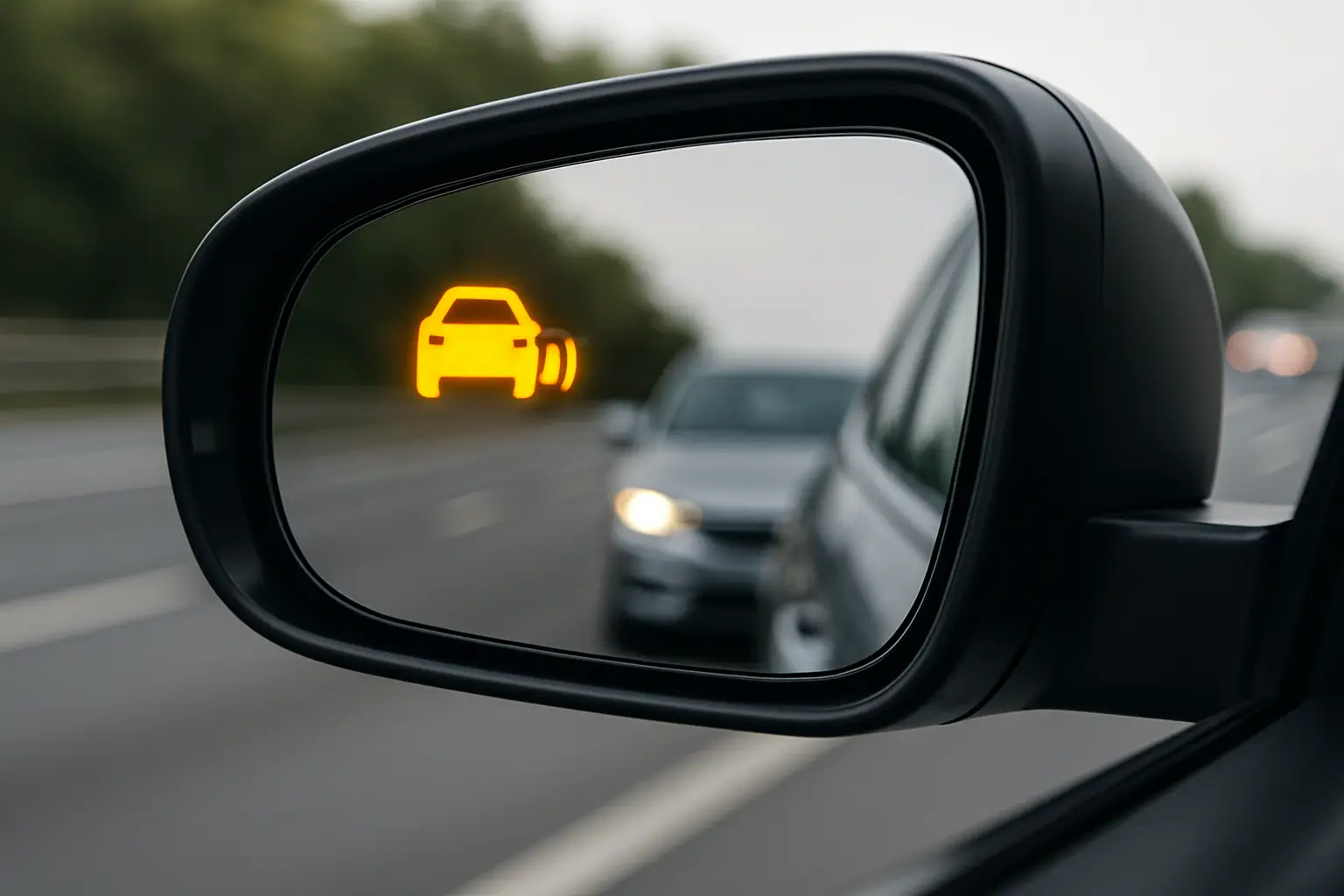
This technology is one of the most important safety advancements in recent years. At its core, an FCW system acts as a second set of eyes. A small camera, usually mounted on the windshield near the rearview mirror, constantly scans the road ahead. It uses smart algorithms2 to calculate your speed, the speed of the car in front of you, and the distance between you. If the gap closes too quickly, suggesting a potential collision, the system instantly triggers an alarm. This is usually a combination of a loud beep and a flashing visual alert. That split-second warning is often all you need to hit the brakes and avoid an accident. I remember testing one of our early prototypes on a closed course. The system consistently alerted me faster than my own eyes could react. It’s not about replacing the driver; it's about providing a crucial backup.
| Feature | Forward Collision Warning (FCW) | Automatic Emergency Braking (AEB) |
|---|---|---|
| 機能 | Warns the driver of a potential crash. | Warns and then applies brakes if needed. |
| Complexity | Simpler to install as a retrofit kit. | Very complex, rarely available for older cars. |
| Main Goal | Give the driver time to react. | Prevent or reduce the impact of a crash. |
Are you sure there’s no one in your blind spot?
You check your mirrors and shoulder-check, but there is still a nagging doubt. A car can hide perfectly in that blind spot. What if a light could tell you for sure?
Blind spot monitoring (BSM) systems use radar sensors mounted on your car's rear sides. They detect vehicles you cannot see and trigger a warning light in your side mirror or A-pillar, preventing dangerous lane-change accidents.

Changing lanes on a busy highway is a moment of high stress. A blind spot monitor removes the guesswork. The "brains" of the system are usually two radar sensors installed inside the rear bumper, one on each corner. These sensors emit radar waves that scan the adjacent lanes. When another vehicle enters your blind spot, the system detects it and activates a small but bright LED light, typically placed on the A-pillar inside the car or directly on the side mirror glass. This visual cue is intuitive and non-distracting. You learn to glance at it just as you would your mirror. Many systems also include Rear Cross-Traffic Alert (RCTA)3, which uses the same sensors to warn you of approaching cars when you're backing out of a parking space. I installed a system on my family’s car, and it provides incredible peace of mind, especially in heavy city traffic. It’s a feature you quickly feel you can't drive without.
| Sensor Type | Pros | Cons |
|---|---|---|
| Radar | Longer range, works well in bad weather. | More expensive, professional install needed. |
| Ultrasonic | Less expensive, simpler installation. | Shorter range, can be affected by dirt. |
What happens when you drift out of your lane by mistake?
Long drives can be tiring, and a moment of inattention can be dangerous. Drifting out of your lane is a common cause of serious accidents. A simple alert can keep you safe.
A Lane Departure Warning (LDW) system uses a forward-facing camera to see the lane markings on the road. If you start to drift without signaling, it alerts you with a sound, reminding you to correct your steering.
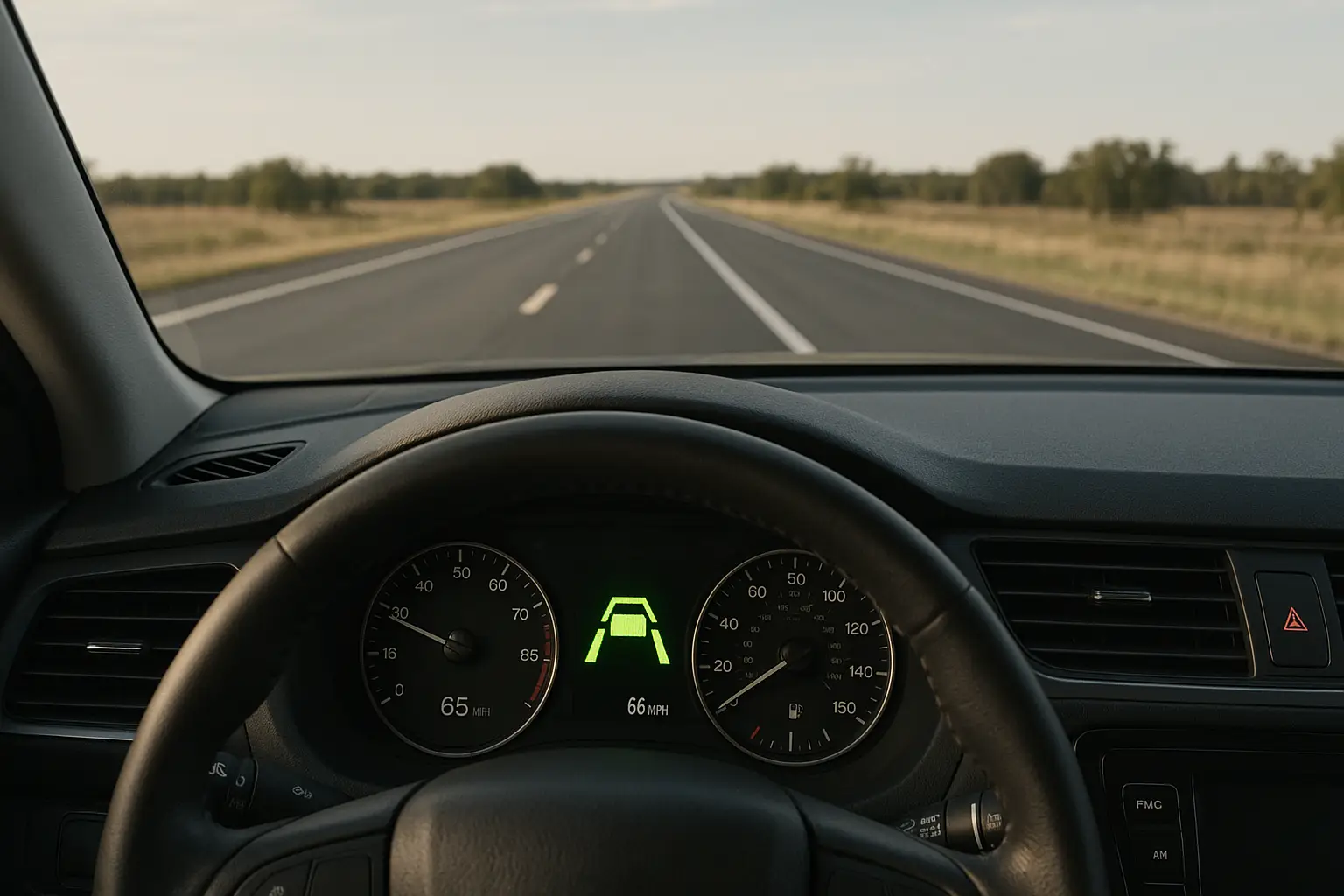
This is your guardian angel on long, monotonous highway drives. The system is almost always integrated with a forward-facing camera, often the same one used for a forward collision warning system. It's programmed to recognize lane markings, whether they are solid or dashed lines. As long as you are centered in your lane, it stays silent. But if your wheel touches a lane line and your turn signal isn't on, the system assumes you are drifting unintentionally. It immediately issues an audible alert, like a chime or a beep. This simple sound is incredibly effective at grabbing your attention and prompting you to steer back to safety. On a long road trip to visit a supplier, I remember feeling my eyes get heavy. The gentle beep from the LDW system was the wake-up call I needed to pull over for a coffee. It doesn't steer for you, but it ensures you are the one in control.
| System | What It Does | Best For |
|---|---|---|
| Lane Departure Warning (LDW) | Alerts you when you drift from your lane. | Highway driving, preventing fatigue-related errors. |
| Lane Keep Assist (LKA) | Actively nudges the steering to keep you in lane. | Mostly on new cars, very hard to retrofit. |
Can you really see everything behind your car?
Reversing is always a bit of a guess. You turn your head, but low obstacles and small children are invisible. This uncertainty can lead to a tragic, preventable accident.
A backup camera gives you a clear, wide-angle view of the area directly behind your vehicle on a monitor. Paired with parking sensors, it makes reversing much safer by revealing hidden hazards.
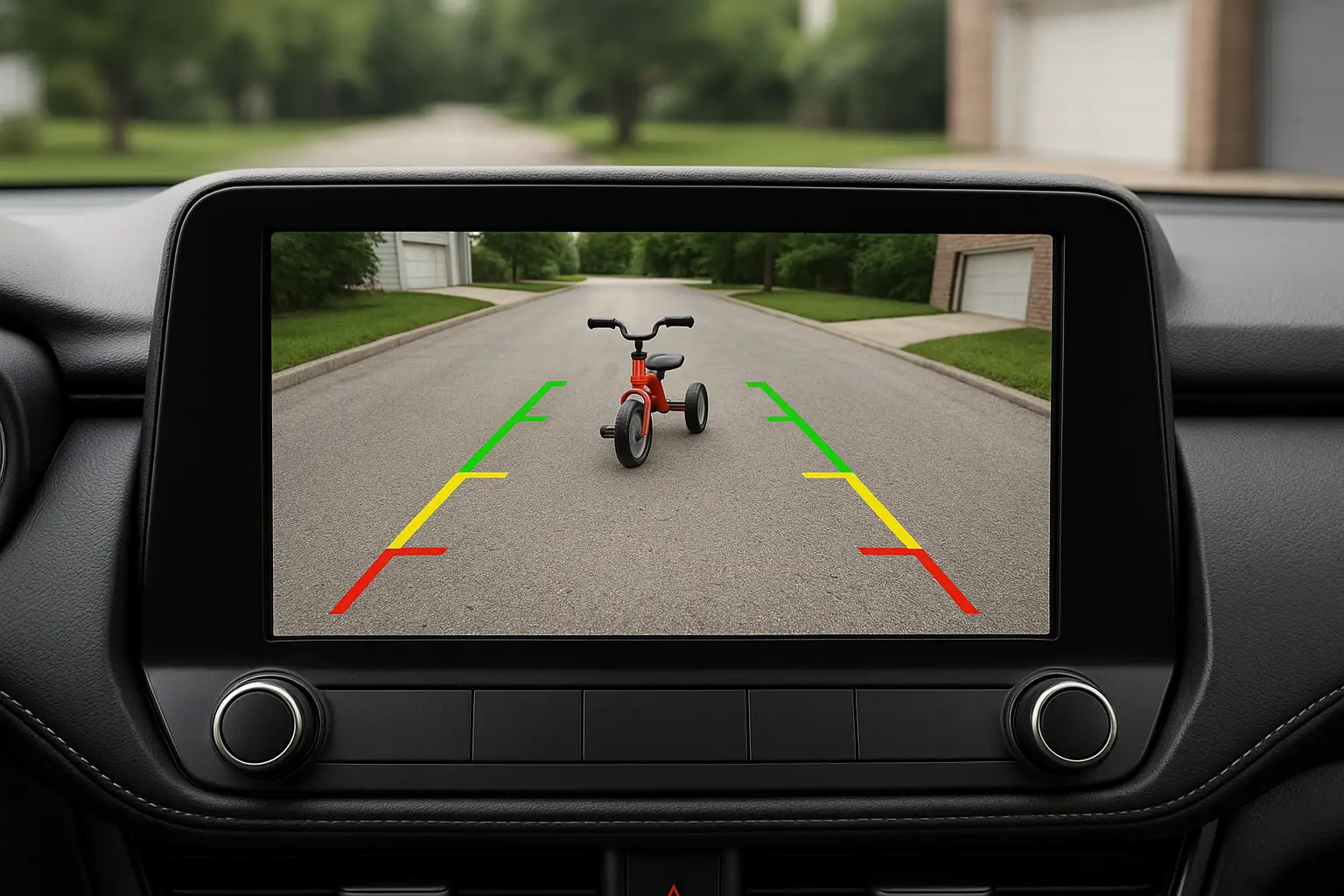
This is one of the easiest and most impactful safety upgrades4 you can make. The danger zone directly behind a vehicle is much larger than most people think. A backup camera eliminates it. The camera itself is small and usually mounted on the license plate frame or near the trunk handle. It’s wired to a display screen, which can be a small standalone monitor on your dash, a replacement rearview mirror with a built-in screen, or your car's existing infotainment display if it’s compatible. When you shift into reverse, the screen automatically shows a live, wide-angle video feed of what's behind you. Many kits even overlay gridlines to help you judge distance and trajectory. For even greater safety, you can combine this with ultrasonic parking sensors mounted in the bumper. These sensors provide audible beeps that get faster as you get closer to an object. At VST Tech, we believe this technology prevents countless low-speed tragedies every year. It’s a small investment for huge peace of mind.
| Mount Type | インストール | View |
|---|---|---|
| License Plate | Easiest, often DIY-friendly. | Good view, but can be slightly off-center. |
| Trunk Handle | Looks like a factory install, centered view. | More involved installation process. |
| Bumper Mount | Very clean, integrated look. | Requires drilling into the bumper. |
Do you know if your tires are dangerously underinflated?
A slow leak in a tire can go unnoticed until it is too late. A sudden blowout on the highway is terrifying and can cause a total loss of control.
An aftermarket Tire Pressure Monitoring System (TPMS) uses sensors on each tire to track air pressure. It displays the real-time pressure for each tire and alerts you instantly if it drops to an unsafe level.
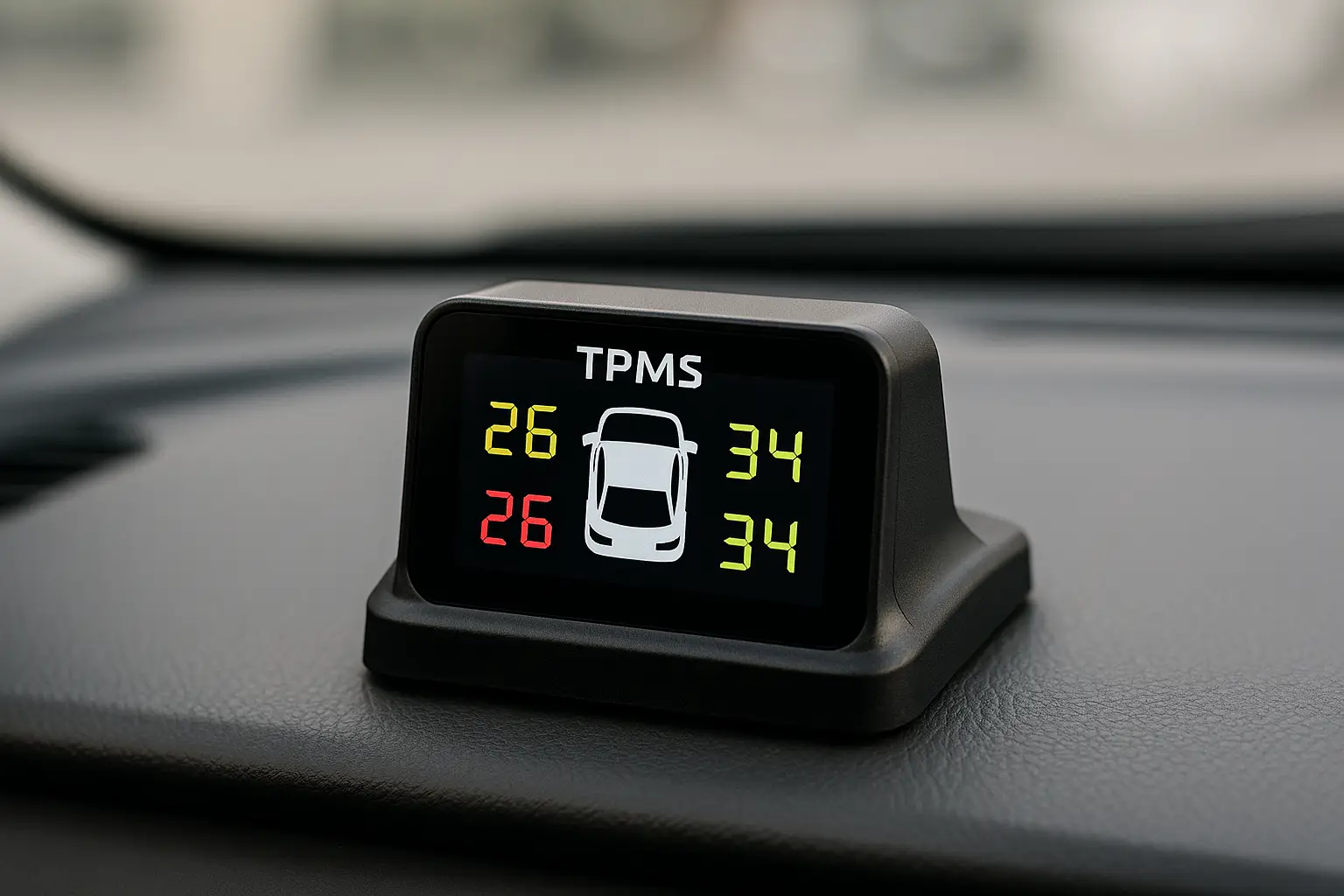
While not always seen as a "driver assistance" system, correct tire pressure is fundamental to your car's safety. It affects braking, handling, and stability. A TPMS retrofit kit brings this modern safety check to any car. There are two main types. External systems have small sensor caps that you simply screw onto each tire’s valve stem in place of the normal caps. These are incredibly easy to install yourself. Internal systems have sensors that are mounted inside the tire, replacing the valve stem. These require a tire shop to install but are more secure and protected. Both types transmit data wirelessly to a small receiver you place on your dashboard. This unit displays the exact pressure of each tire in real-time. If any tire's pressure drops below a safe level, an alarm sounds. I once had a TPMS alert me to a nail in my tire. The pressure was dropping slowly, a leak I never would have noticed otherwise. I got it fixed before it led to a dangerous blowout on the highway.
| TPMS Type | インストール | Accuracy | Security |
|---|---|---|---|
| External Cap | DIY, screw-on installation. | Good | Low (can be stolen or damaged). |
| Internal Sensor | Professional installation required. | Excellent | High (protected inside the tire). |
結論
You don't need a new car to be safer. Retrofitting these ADAS technologies gives your trusted older vehicle a modern safety upgrade, protecting you and your loved ones on the road.
-
Discover ways to upgrade your older car with modern safety features for better protection. ↩
-
Discover how smart algorithms enhance the effectiveness of safety features in vehicles. ↩
-
Learn how RCTA can help you avoid accidents while reversing out of parking spaces. ↩
-
Find out which safety upgrades can significantly enhance the protection of your older vehicle. ↩


